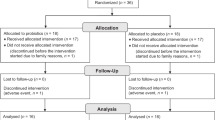Abstract
Probiotic bacteria are used for production of fermented dairy products. The use of probiotic bacteria has the potential to replenish the natural intestinal flora of the body. These bacteria competitively inhibit the growth and colonization of pathogenic bacteria. Breastmilk is the best food for babies, also from a probiotic point of view. Human milk, in fact, contains many substances that stimulate the growth of bifidobacteria in vitro and in the small intestine of infants. Improvement of lactose digestion and avoidance of symptoms of intolerance in lactose malabsorbers are the most profoundly studied health-relevant effects of fermented milk. In fact fermented milks are nutritionally similar to unfermented milk, except that some of lactose is broken down to glucose and galactose. The role of fermented milk in complementary feeding and in particular for the prevention of anaemia is an innovative theme, recently focused. Iron deficiency in infants and young children is widespread and has serious consequences for child health. Prevention of iron deficiency should therefore be given high priority. The too-early introduction of unmodified cow's milk and milk products is an important nutritional risk factors for the development of iron-deficiency anaemia. Fermented milks represent an excellent source of nutrients such as calcium, protein, phosphorus and riboflavin. During the fermentation of milk, lactic acid and other organic acids are produced and these increase the absorption of iron. If fermented milk is consumed at mealtimes, these acids are likely to have a positive effect on the absorption of iron from other foods.
This is a preview of subscription content, access via your institution
Access options
Subscribe to this journal
Receive 12 print issues and online access
$259.00 per year
only $21.58 per issue
Buy this article
- Purchase on Springer Link
- Instant access to full article PDF
Prices may be subject to local taxes which are calculated during checkout
Similar content being viewed by others
Author information
Authors and Affiliations
Corresponding author
Rights and permissions
About this article
Cite this article
Branca, F., Rossi, L. The role of fermented milk in complementary feeding of young children: lessons from transition countries. Eur J Clin Nutr 56 (Suppl 4), S16–S20 (2002). https://doi.org/10.1038/sj.ejcn.1601676
Published:
Issue Date:
DOI: https://doi.org/10.1038/sj.ejcn.1601676
Keywords
This article is cited by
-
Is there a role for carbohydrate restriction in the treatment and prevention of cancer?
Nutrition & Metabolism (2011)
-
The creatine kinase system and pleiotropic effects of creatine
Amino Acids (2011)



